

An Interactive Exhibit by Islanding New York, Supported by the Mellon Foundation.
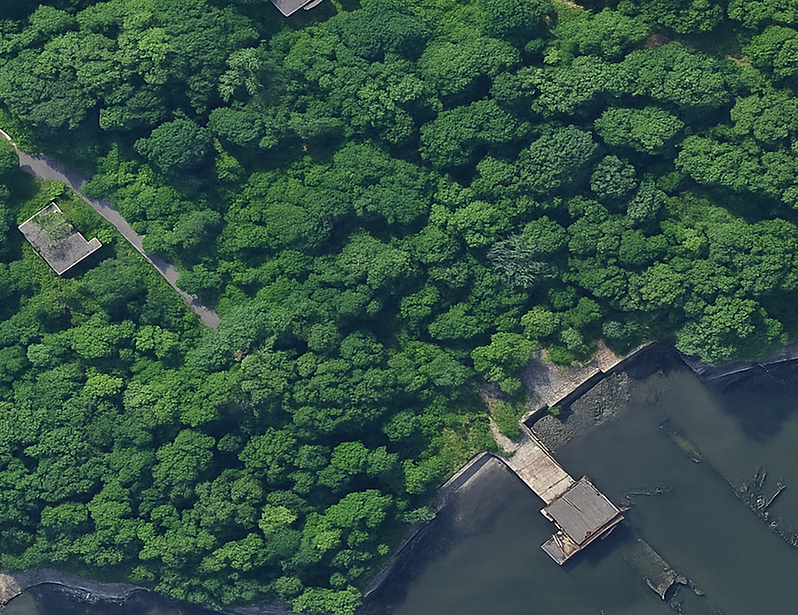
Tools:
Timeline:
Figma
Adobe Xd
Uizard
3 Weeks
Overview
"What Remains, What Could Be" was an immersive public exhibit that invited visitors to rediscover a forgotten piece of New York City’s landscape and imagine its potential futures. Tucked away in the East River and long closed to the public, the island at the heart of the exhibit held a complex history, once a quarantine site, later a rehabilitation center, and eventually a bird sanctuary.
Exhibit Context & Collaboration
Shown on May 5, 2025, at 41 Park Row in New York City, the exhibit was part of Islanding New York and made possible with support from the Mellon Foundation. Under the mentorship of Dr. Jonathan Williams, a design educator and researcher at Pace University Seidenberg School of Computer Science and Information Systems.
Our team brought the layered history and imagined futures of North Brother Island to life through immersive storytelling, projections, and hands-on engagement.

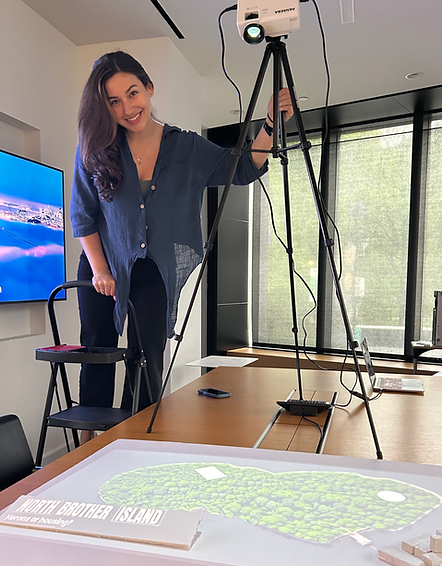
My Role and contributions
As the UX Designer, I led the creation of a high-fidelity, click-through prototype that brought the exhibit's interactive vision to life. Collaborating closely with a multidisciplinary team, including a lead researcher, curator, and operations coordinator. I assisted in UX research and ensured a cohesive experience that seamlessly integrated storytelling, interaction, and visual design.
Key Contributions:
Design Challenge
How do you engage audiences with a remote, restricted island, and turn it into a place of imagination, reflection, and choice?
Collaborative Ideation and Conceptualization
To transform a remote and restricted island like North Brother Island into a space of imagination, reflection, and choice, our team embraced a collaborative and iterative UX design process.
We began by brainstorming potential ways to represent the island's reality, utilizing collaborative tools like FigJam to facilitate idea generation and decision-making. This collective effort led to the development of a central concept that guided our design direction. By focusing our efforts on this unified vision, we ensured a cohesive and engaging experience for our audience.

Research and Inspiration from Established Institutions
Recognizing the value of existing expertise, we conducted research to understand how major museums present interactive exhibits to the public. A notable example is the Museum of the City of New York's "New York at Its Core" exhibition, which integrates history with technology to engage visitors . Additionally, we visited the Museum of the City of New York to gain firsthand insights into their interactive design approaches, which informed our own exhibit's development
The experience
Visitors were presented with a large interactive table, where an overhead projection displayed a map of North Brother Island. They could interact in one of two ways:
-
Use building blocks to imagine a revitalized urban community with homes, infrastructure, and people.
-
Plant trees to represent a return to nature, lush greenery, wildlife habitats, and protection for the black-crowned night heron.

As participants placed their items on the table, live projections transformed, showing the island shift in real time depending on user input. This dual-path interaction highlighted an ongoing question: Should North Brother Island serve as a haven for biodiversity, or be reclaimed for human use?

Test-Ready Prototype for Public Engament.
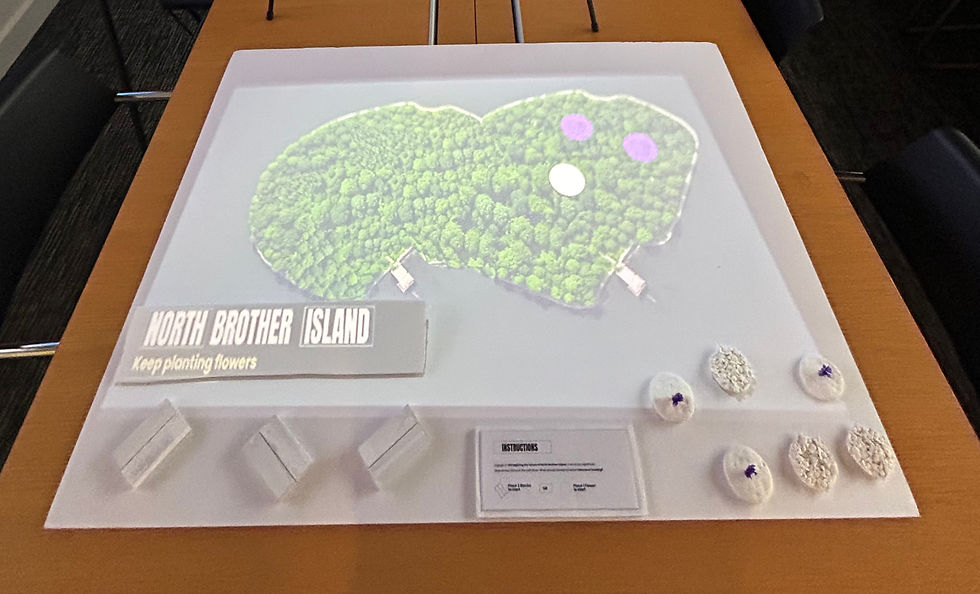
Displays a landscape of North Brother Island.
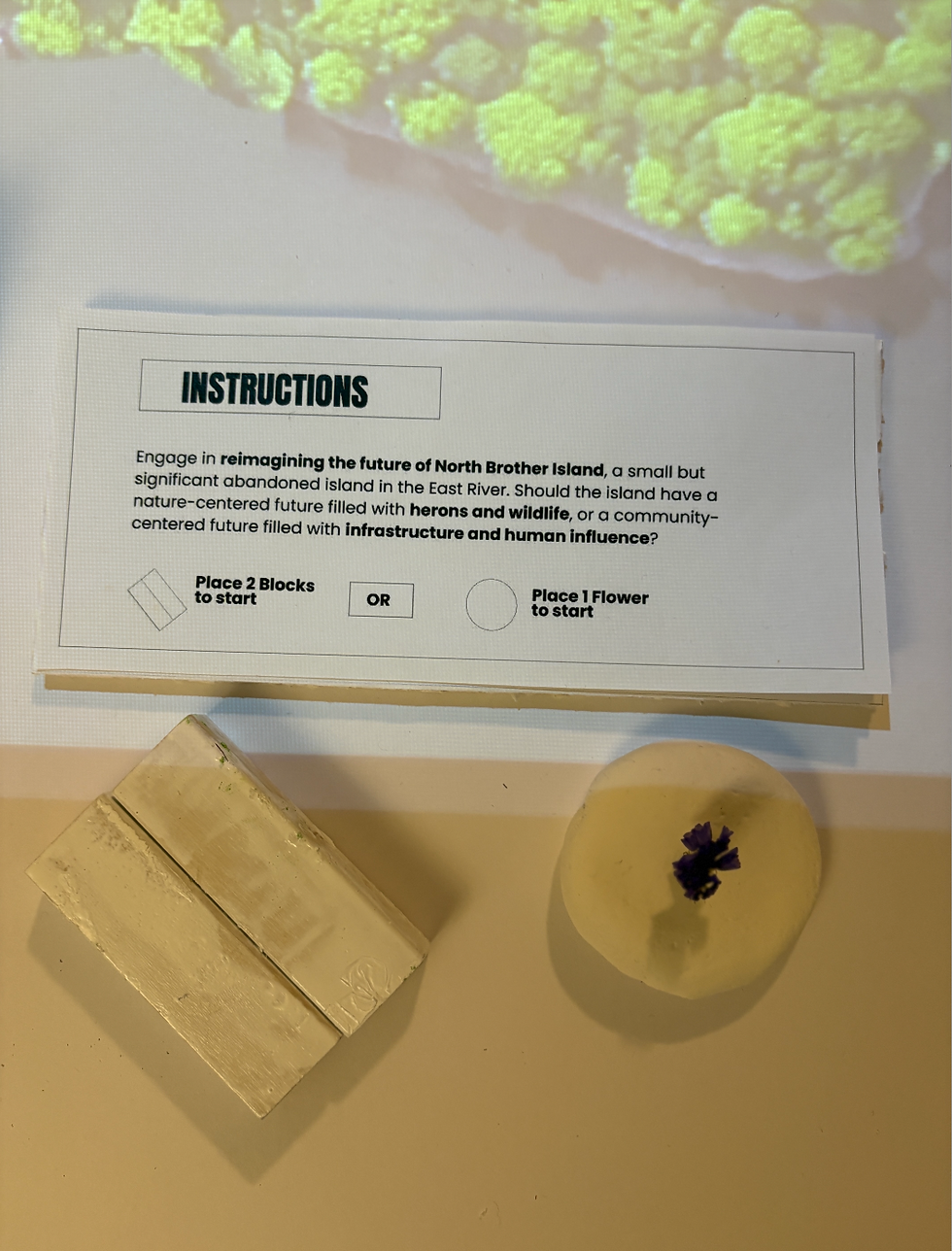
User reads and acknowledges the instructions.

By closely observing user interactions with the exhibit, we identified recurring themes and gathered feedback.

Participants engage with physical elements, such as planting trees,triggering real-time projections.

Showcasing an island teeming with herons thriving in this newly reimagined habitat.

In this activity, users engage in a collaborative design challenge to create sustainable housing solutions.
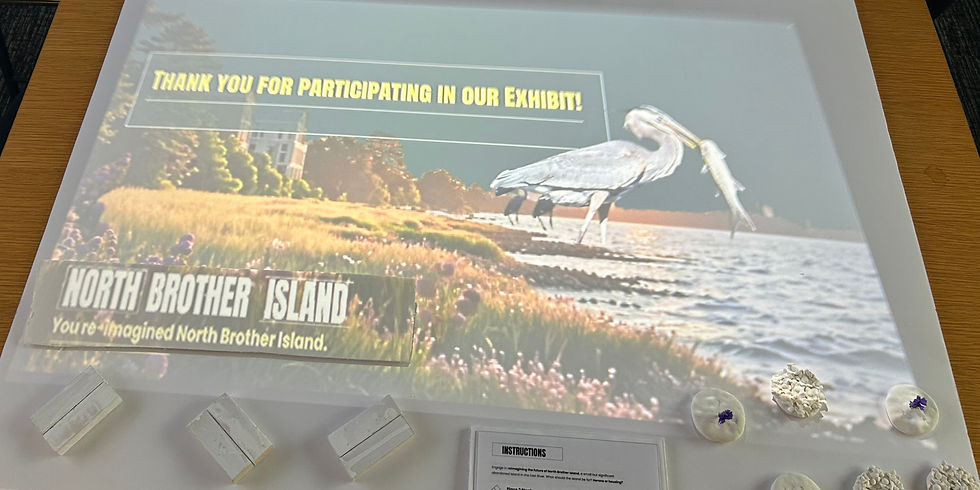
The system provides clear feedback to the user, indicating that the activity has concluded.

Key Themes
This exhibit wasn't just educational, it was participatory. It asked each visitor to weigh the island’s ecological significance against its urban legacy. Is it a sanctuary for birds or a canvas for new communities?
Key Themes
The design invited users to consider their role in shaping not just the island’s future, but broader conversations about land, memory, and renewal.
.png)
Our Annual
Impact
Visitors were engaged, reflective, and often surprised. Many had never heard of North Brother Island before and left with a sense of curiosity and responsibility. The interactive nature of the exhibit fostered conversation, imagination, and meaningful dialogue around space, stewardship, and possibility.
Reflection
Through my participation in this project, I learned how design and research serve as a bridge between story and action. I helped bring an overlooked island into focus, inviting visitors to explore and imagine its future. Feedback from earlier iterations was crucial in shaping not just the visual elements, but also the clarity, timing, and emotional resonance of the experience.
This project reinforced how thoughtful design and research can spark social change, raising awareness about ecological issues and shedding light on places that may be endangered or forgotten. Done well, such initiatives can connect people to important stories and inspire collective action for a better future.
